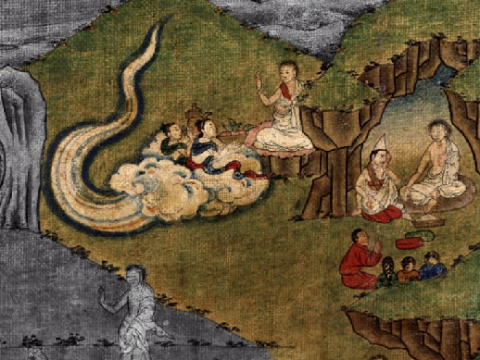Pa, ba and ma, with or without an o vowel,
Are the nominalizing particles. After ga, da, na,
ba, ma, sa and da-drak, the particle pa is used.
After nga, 'a, ra, la; and where there is no suffix,
The nominalizing particle to use is ba,
But it is good to use pa where there is an even number of syllables.
Chapter 8: Returning home

The enlightenment of Rechungpa, Milarepa's student. From Himalayan Art.
In Chapter 8, Milarepa returns to his homeland. In this Unit, you will read the eighth chapter of this abridged life story while continuing to learn new grammatical constructions and expressions. You will memorize a traditional grammar verse about nominalizing particles and practice word sequencing for some short Tibetan sentences.
When you’re ready to study Chapter Eight, begin with 8.1 Grammar Preview and 8.2 Sentence Building. With those, you should be ready to try 8.3 Reading & Translation. From this Chapter onwards, there will be no verb or noun hints. You should also memorize the Tibetan grammar verse, review your grammar with 8.5 Sequencing Practice, and practice your pronunciation by following along with 8.6 Reading Aloud. Finally, in 8.7 you may view a short introduction to the Tibetan collection at the University of Toronto.
Reading & Translation from the Life of Milarepa
Nominalizing particles
Rearrange the following words so that they make the phrase below in correct Tibetan word order. For help, press the Colors button to color words according to their grammatical categories, or the Hint button to show word glosses when hovering over a word.
When you are finished with an example, press Mark. If your answer is correct, then press Next to move on to the next example. If your answer is incorrect, then you may have to repeat the exercise one or more times. Press the Repeat button to do so. Note that this is just to give you more practice; repeat attempts will neither help nor hurt your score. When you have attempted an exercise as many times as allowed, then press Answer to see the answer.
